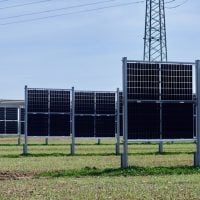The integration of solar energy into various sectors, particularly in livelihood programs, offers a multitude of benefits that extend beyond mere energy provision. One of the most significant advantages is the reduction in energy costs. For communities that rely on traditional energy sources, such as diesel generators or kerosene lamps, the financial burden can be substantial.
By harnessing solar energy, these communities can significantly lower their energy expenses, allowing them to allocate funds toward other essential needs, such as education and healthcare. Moreover, solar energy is a renewable resource, which means it is sustainable and can be harnessed without depleting natural resources. This aspect is particularly crucial in regions where environmental degradation is a pressing concern.
In addition to cost savings and sustainability, solar energy integration can enhance productivity and economic opportunities. For instance, farmers can utilize solar-powered irrigation systems to ensure consistent water supply for their crops, leading to increased yields and improved food security. Similarly, small businesses can benefit from solar energy by powering equipment and extending operational hours, ultimately boosting their income potential.
The ripple effect of these benefits can lead to improved livelihoods, reduced poverty levels, and enhanced community resilience against economic shocks. Are You Working on Solar Innovation or Clean Energy Access? Join us to receive updates.
Key Takeaways
- Solar energy integration offers numerous benefits including cost savings, environmental sustainability, and energy independence.
- Identifying suitable solar energy solutions for livelihood programs involves considering factors such as energy needs, infrastructure, and community engagement.
- Assessing the financial viability of solar energy integration requires careful consideration of initial investment, operational costs, and potential revenue streams.
- Overcoming challenges in implementing solar energy solutions may involve addressing technical, financial, and regulatory barriers.
- Training and capacity building for solar energy integration is essential for ensuring successful implementation and long-term sustainability.
Identifying Suitable Solar Energy Solutions for Livelihood Programs
When considering solar energy solutions for livelihood programs, it is essential to assess the specific needs and contexts of the target communities. Different regions may require tailored approaches based on factors such as geographical location, climate conditions, and existing infrastructure. For example, rural areas with abundant sunlight may benefit from off-grid solar home systems that provide electricity for lighting and small appliances.
In contrast, communities engaged in agriculture might find solar-powered water pumps or greenhouses more beneficial for enhancing their productivity. Moreover, it is crucial to involve community members in the decision-making process to ensure that the chosen solutions align with their needs and preferences. Conducting surveys or focus group discussions can provide valuable insights into the types of solar technologies that would be most effective.
Additionally, partnerships with local organizations or experts can facilitate the identification of suitable technologies and help in the implementation process. By prioritizing community input and context-specific solutions, NGOs can enhance the likelihood of successful solar energy integration in livelihood programs.
Assessing the Financial Viability of Solar Energy Integration

Financial viability is a critical consideration when integrating solar energy into livelihood programs. NGOs must conduct thorough cost-benefit analyses to determine the potential return on investment for solar projects. This analysis should include initial capital costs, ongoing maintenance expenses, and projected savings from reduced energy bills.
Additionally, it is essential to consider the potential for income generation through solar-powered initiatives, such as selling excess energy back to the grid or using solar energy to power income-generating activities. Exploring financing options is also vital for ensuring the financial sustainability of solar energy projects. NGOs can consider various funding sources, including grants, loans, and crowdfunding campaigns.
Collaborating with financial institutions that specialize in renewable energy financing can provide access to affordable loans for community members looking to invest in solar technologies. Furthermore, establishing partnerships with private sector companies can lead to innovative financing models that reduce upfront costs for beneficiaries while ensuring long-term sustainability.
Overcoming Challenges in Implementing Solar Energy Solutions
Despite the numerous benefits of solar energy integration, several challenges may arise during implementation. One common obstacle is the lack of technical expertise within communities to install and maintain solar systems. To address this issue, NGOs can facilitate training programs that equip local technicians with the necessary skills to handle installation and maintenance tasks.
By building local capacity, communities can become more self-reliant and reduce dependency on external support. Another challenge is the initial capital investment required for solar projects. Many communities may struggle to afford the upfront costs associated with purchasing solar equipment.
To mitigate this barrier, NGOs can explore innovative financing mechanisms such as pay-as-you-go models or community-based financing schemes that allow beneficiaries to pay for their systems over time. Additionally, raising awareness about the long-term savings associated with solar energy can help communities understand the value of investing in these solutions despite initial costs.
Training and Capacity Building for Solar Energy Integration
Training and capacity building are essential components of successful solar energy integration in livelihood programs. NGOs should prioritize developing training modules that cover various aspects of solar technology, including installation, maintenance, and troubleshooting. These training sessions should be tailored to different audiences, such as community members, local technicians, and project staff, ensuring that everyone involved has a clear understanding of how to effectively utilize solar energy solutions.
Furthermore, ongoing support and mentorship are crucial for reinforcing skills learned during training sessions. Establishing a network of local experts who can provide guidance and assistance can help build confidence among community members as they adopt new technologies. Additionally, incorporating hands-on learning experiences into training programs can enhance participants’ understanding and retention of information.
By investing in training and capacity building, NGOs can empower communities to take ownership of their solar energy initiatives and ensure long-term success.
Engaging Stakeholders and Community Participation

Engaging stakeholders and fostering community participation are vital for the successful integration of solar energy solutions in livelihood programs. NGOs should actively involve local leaders, government officials, and community members throughout the project lifecycle—from planning to implementation and evaluation. This collaborative approach not only builds trust but also ensures that diverse perspectives are considered in decision-making processes.
Community participation can take various forms, including participatory planning workshops, feedback sessions, and regular updates on project progress. By creating platforms for open dialogue, NGOs can encourage community members to voice their concerns and suggestions regarding solar energy initiatives. This engagement not only enhances project relevance but also fosters a sense of ownership among beneficiaries, increasing the likelihood of sustained commitment to solar energy solutions.
Monitoring and Evaluation of Solar Energy Integration
Monitoring and evaluation (M&E) are critical components of any successful project, including those focused on solar energy integration in livelihood programs. Establishing clear indicators for success allows NGOs to track progress and assess the impact of solar initiatives on community livelihoods. These indicators may include metrics related to energy access, economic benefits, environmental sustainability, and social well-being.
Regular M&E activities should involve collecting data through surveys, interviews, and focus group discussions with beneficiaries. This feedback loop enables NGOs to identify areas for improvement and make necessary adjustments to project implementation strategies. Additionally, sharing M&E findings with stakeholders fosters transparency and accountability while highlighting the positive outcomes achieved through solar energy integration.
Ensuring Sustainability and Long-Term Impact
To ensure sustainability and long-term impact from solar energy integration in livelihood programs, NGOs must adopt a holistic approach that considers environmental, social, and economic factors. This includes promoting practices that enhance the resilience of communities against climate change while ensuring equitable access to resources. For instance, integrating agroecological practices with solar-powered irrigation systems can create synergies that improve both agricultural productivity and environmental health.
Furthermore, establishing local governance structures that oversee the management of solar projects can enhance accountability and sustainability. These structures should involve community representatives who are committed to maintaining the systems over time. By fostering a sense of ownership among community members and promoting responsible management practices, NGOs can help ensure that solar energy solutions continue to benefit livelihoods for years to come.
Case Studies of Successful Solar Energy Integration in Livelihood Programs
Examining real-world examples of successful solar energy integration can provide valuable insights for NGOs looking to implement similar initiatives. One notable case is a project in rural India where an NGO partnered with local farmers to introduce solar-powered irrigation systems. The project not only improved crop yields but also reduced reliance on expensive diesel pumps, leading to significant cost savings for farmers.
As a result, many families were able to invest in education for their children and improve their overall quality of life. Another inspiring example comes from a community in Kenya that adopted solar-powered microgrids to provide electricity for small businesses. The microgrids enabled entrepreneurs to extend their operating hours and diversify their product offerings.
As a result, local businesses flourished, creating jobs and stimulating economic growth within the community. These case studies highlight the transformative potential of solar energy integration when tailored to meet specific community needs.
Policy and Advocacy for Supportive Solar Energy Regulations
Advocacy plays a crucial role in creating an enabling environment for solar energy integration in livelihood programs. NGOs should engage with policymakers at local, national, and international levels to promote supportive regulations that facilitate access to renewable energy technologies. This may involve advocating for incentives such as tax breaks or subsidies for solar installations or pushing for policies that streamline permitting processes for renewable energy projects.
Additionally, raising awareness about the benefits of solar energy among policymakers can help garner support for initiatives aimed at expanding access to clean energy solutions in underserved communities. Collaborating with other organizations or coalitions focused on renewable energy advocacy can amplify efforts and create a unified voice calling for change.
Leveraging Partnerships for Effective Solar Energy Integration
Building strategic partnerships is essential for maximizing the impact of solar energy integration in livelihood programs. NGOs should seek collaborations with various stakeholders, including government agencies, private sector companies, academic institutions, and other civil society organizations. These partnerships can facilitate knowledge sharing, resource mobilization, and capacity building efforts.
For instance, partnering with technology providers can ensure access to high-quality solar equipment while collaborating with financial institutions can open up innovative financing options for beneficiaries. Additionally, engaging with research institutions can provide valuable insights into best practices and emerging trends in renewable energy technologies. By leveraging partnerships effectively, NGOs can enhance their capacity to implement successful solar energy initiatives that drive positive change in communities.
In conclusion, integrating solar energy into livelihood programs presents a unique opportunity for NGOs to empower communities while promoting sustainable development goals. By understanding the benefits of solar energy integration, identifying suitable solutions, assessing financial viability, overcoming challenges, providing training, engaging stakeholders, monitoring progress, ensuring sustainability, learning from case studies, advocating for supportive policies, and leveraging partnerships—NGOs can create lasting impacts that improve livelihoods while contributing to a cleaner environment.









































